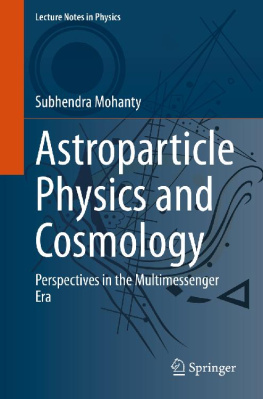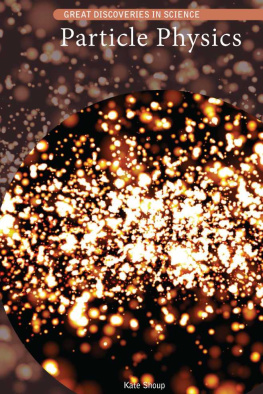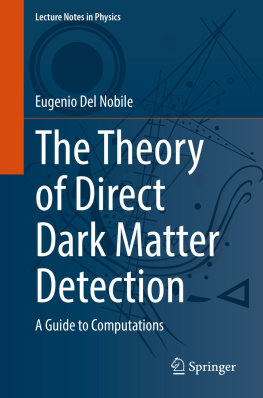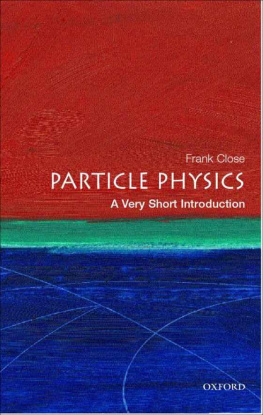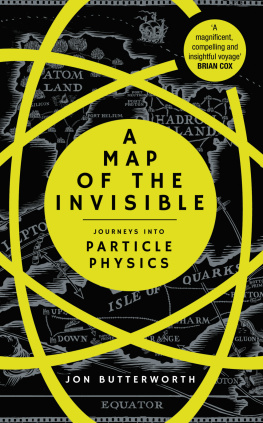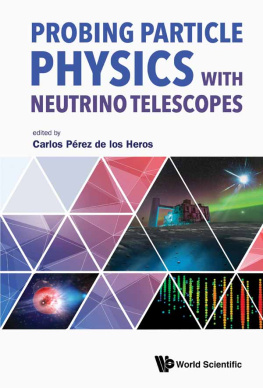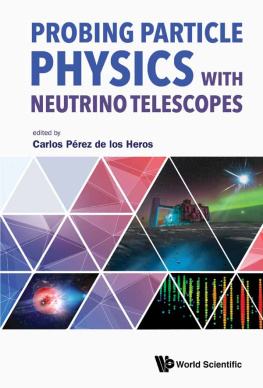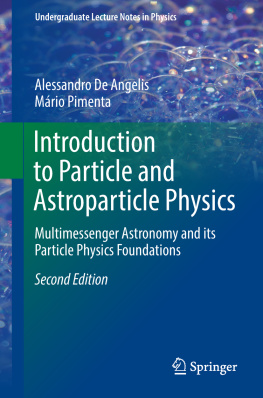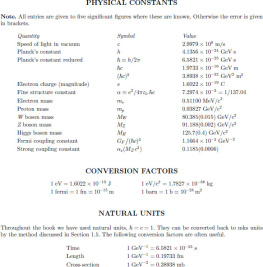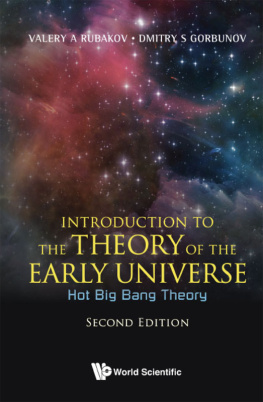Volume 975
Lecture Notes in Physics
Series Editors
Matthias Bartelmann
Heidelberg, Germany
Roberta Citro
Salerno, Italy
Peter Hnggi
Augsburg, Germany
Morten Hjorth-Jensen
Oslo, Norway
Maciej Lewenstein
Barcelona, Spain
Angel Rubio
Hamburg, Germany
Manfred Salmhofer
Heidelberg, Germany
Wolfgang Schleich
Ulm, Germany
Stefan Theisen
Potsdam, Germany
James D. Wells
Ann Arbor, MI, USA
Gary P. Zank
Huntsville, AL, USA
Founding Editors
Wolf Beiglbck
Heidelberg, Germany
Jrgen Ehlers
Potsdam, Germany
Klaus Hepp
Zrich, Switzerland
Hans-Arwed Weidenmller
Heidelberg, Germany
The series Lecture Notes in Physics (LNP), founded in 1969, reports new developments in physics research and teaching - quickly and informally, but with a high quality and the explicit aim to summarize and communicate current knowledge in an accessible way. Books published in this series are conceived as bridging material between advanced graduate textbooks and the forefront of research and to serve three purposes:
to be a compact and modern up-to-date source of reference on a well-defined topic;
to serve as an accessible introduction to the field to postgraduate students and non-specialist researchers from related areas;
to be a source of advanced teaching material for specialized seminars, courses and schools.
Both monographs and multi-author volumes will be considered for publication. Edited volumes should however consist of a very limited number of contributions only. Proceedings will not be considered for LNP.
Volumes published in LNP are disseminated both in print and in electronic formats, the electronic archive being available at springerlink.com. The series content is indexed, abstracted and referenced by many abstracting and information services, bibliographic networks, subscription agencies, library networks, and consortia.
Proposals should be sent to a member of the Editorial Board, or directly to the responsible editor at Springer:
Dr Lisa Scalone
Springer Nature
Physics
Tiergartenstrasse 17
69121 Heidelberg, Germany
lisa.scalone@springernature.com
More information about this series at http://www.springer.com/series/5304
Subhendra Mohanty
Astroparticle Physics and Cosmology
Perspectives in the Multimessenger Era
1st ed. 2020
Subhendra Mohanty
Theory Division, Physical Research Laboratory, Ahmedabad, Gujarat, India
ISSN 0075-8450 e-ISSN 1616-6361
Lecture Notes in Physics
ISBN 978-3-030-56200-7 e-ISBN 978-3-030-56201-4
https://doi.org/10.1007/978-3-030-56201-4
Springer Nature Switzerland AG 2020
This work is subject to copyright. All rights are reserved by the Publisher, whether the whole or part of the material is concerned, specifically the rights of translation, reprinting, reuse of illustrations, recitation, broadcasting, reproduction on microfilms or in any other physical way, and transmission or information storage and retrieval, electronic adaptation, computer software, or by similar or dissimilar methodology now known or hereafter developed.
The use of general descriptive names, registered names, trademarks, service marks, etc. in this publication does not imply, even in the absence of a specific statement, that such names are exempt from the relevant protective laws and regulations and therefore free for general use.
The publisher, the authors and the editors are safe to assume that the advice and information in this book are believed to be true and accurate at the date of publication. Neither the publisher nor the authors or the editors give a warranty, expressed or implied, with respect to the material contained herein or for any errors or omissions that may have been made. The publisher remains neutral with regard to jurisdictional claims in published maps and institutional affiliations.
This Springer imprint is published by the registered company Springer Nature Switzerland AG.
The registered company address is: Gewerbestrasse 11, 6330 Cham, Switzerland
Dedicated to
My Parents.
Preface
In the last decade, there have been several seminal discoveries starting with the Higgs boson at the LHC (2012); neutrinos with PeV energies at IceCube (2013); detection of gravitational waves from black hole and neutron star mergers by LIGO (2016) and the first picture of the black hole at the centre of the M87 galaxy by the EHT (2019). This comes after the success of the solar, atmospheric and reactor neutrino observation experiments in the last three decades and the cosmic microwave anisotropy measurement experiments (COBE (19891993), WMAP (20012011) and PLANCK( 20092011)). Terrestrial dark matter detection experiments continue to put limits on the mass and cross-section of dark matter (if at all they are elementary particles). Astronomical observations are ongoing in a very large range of the electromagnetic spectrum (from radio to gamma rays) in addition to the observations of high energy neutrinos by IceCube. This ongoing multi-pronged observation of the universe will help us to answer the fundamental questions about the underlying theories that govern the universe.
In this book, we explore the theoretical consequences of these multi-messenger signals from the universe. A graduate student or researcher who is curious about learning a particular research topic may delve into the chapter of their choice to get an introduction to the subject. The treatment is more pedagogical and focussed compared with a review article. The main results discussed are worked out in the text.
In Chap. , we give a survey of the recent experimental observations, which started the multi-messenger era of astronomical observations like observations of gravitational waves, gamma rays, neutrinos and cosmic rays from the same source (e.g. blazers). We also list other important unsolved issues like final unobserved signal of the inflation paradigm, namely the observation of inflation-generated gravitational waves in the early universe via the measurement of the B-mode polarization of the CMB signal.
Dark matter is amongst the hottest areas of enquiry in particle physics and cosmology. In Chap. , we discuss the phenomenology of dark matter at cosmological and galactic scales. Direct detection experiments like Xenon-1T have ruled out a large swathe of the mass vs DMnucleon cross-section parameter space challenging the conventional paradigm of the 100 GeV weakly interacting dark matter, where the observed relic density is naturally accounted for. New mechanisms for explaining the relic density like the freeze-in production of dark matter or the 32 annihilation process are required for evading the stringent constraints from direct detection experiments. Dark matter may be very light with a mass of 1022 eV, or they may not be elementary particles at all and may be primordial black holes.
Large-scale galactic surveys such as the Sloan Digital Sky Survey, Dark Energy Survey and Baryon Oscillations Spectroscopy Survey are increasingly providing data about the distribution of matter in the universe and provide a scope for us to test theories of dark matter, dark energy, neutrino mass, etc. To test theory with observations from the survey, we need to understand perturbations of the metric and matter (dark matter, baryons, photons, neutrinos) in the framework of general relativity. We do this in Chap. 3.

